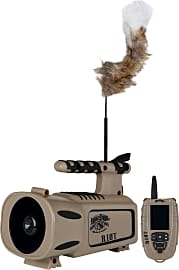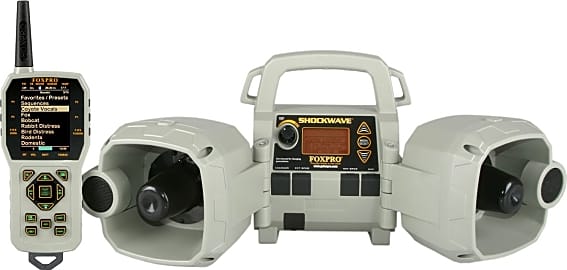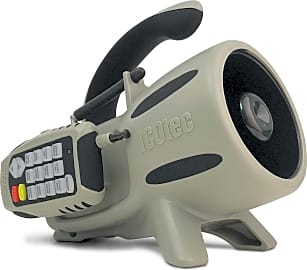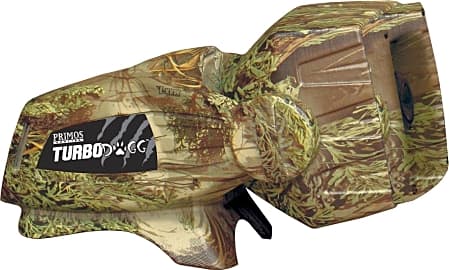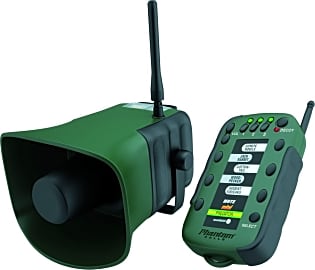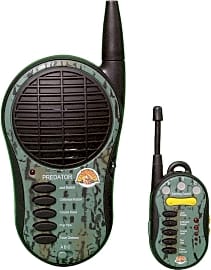The 10 Best Electronic Hunting Calls

This wiki has been updated 40 times since it was first published in June of 2015. The more quickly and effectively you can draw your prey in close to your shooting position, the better chance you have of making a clean kill. By offering a variety of preloaded sounds to imitate various big and small game animals, and by letting you use your own recordings in some cases, these high-tech electronic hunting calls are sure to give you an edge out in the field. When users buy our independently chosen editorial recommendations, we may earn commissions to help fund the Wiki.
Editor's Notes
June 30, 2020:
There are a handful of concerns to focus on when selecting an electronic hunting call, like clarity, range, and the ability to control decoys. Many hunters want a device to come preloaded with some of the sounds you require to hunt your preferred game. Models like the Foxpro Predator Shockwave come with a lot — that particular offering comes with 100. But if you're planning to use your own recordings, you might be more concerned with the total storage space. The Western Rivers WRC-MP400 Mantis Pro, for example, has a gigabyte of space in it for storing calls, and if you aren't going to be too far from the speaker, you can use a Bluetooth connection to play sounds from your smartphone, as well. The only problem there is that there's no dedicated app for this made by the company, unlike the iHunt Ultimate Speaker Combo, which does have an app.
There's also the question of speaker volume, with offerings like that Foxpro Shockwave doubling up its speakers to produce a significant amount of volume. If you hunt in particularly noisy or windy areas, more volume can help cut through all the racket. It can also reach farther, so game that's further afield can be drawn in close. With some models, however, there's a tradeoff in quality for the sake of loudness, like with the Primos Turbo Dogg, which has realistic sounds and can reach high volumes, but that distorts when you push it.
Why Electronic Hunting Calls Outclass The Rest
Hunting calls come in several variations, including calls operated using breath to create a duck's quack or an elk's bleat.
There is no better way to attract an animal than to trick that creature into thinking it is approaching another of its own species or prey in distress. Not only can an effective hunting call attract an animal toward a hunter, researcher, or wildlife photographer, but it can cause the creature to lower its guard, making it easier to get a shot or photo.
Hunting calls come in several variations, including calls operated using breath to create a duck's quack or an elk's bleat. Others use a set of specialty rattles that create the noise of antlers clattering as bucks tussle. In yet another category are electronic hunting calls, which use pre-recorded sound effects to attract a range of animals.
These calls have several distinct benefits over their mechanical counterparts. Rattling in particular requires skill and experience before it can used as an effective way to attract quarry. Using the rattles at the proper volume and cadence to provoke a buck into feeling challenged or to convince a doe that a potentially worthy mate is nearby is not a turnkey operation; much practice and at least some instruction is needed before successful deer rattling will occur.
Effectively using a mouth-blown hunting call that simulates an animal's call, be it a challenge grunt or mating cry also takes practice and patience. And using a hunting call improperly may just as easily scare an animal away as it will lure it close.
An electronic hunting call is a fine choice for the novice hunter or the experienced woodsman alike. These calls create pitch-perfect recreations of an animal's huff, call, or grunt without the potential for human error. They can also produce a much wider variety of sounds than any basic hunting call could create, making them viable for use during many periods of the year. One decent unit can lure in everything from a coyote that's out on the prowl for food or a bobcat seeking a mate.
Another powerful advantage over mechanically-operated devices are that many of these units use remote controls, and thus allow the hunter to be at a distance from the speaker that the prey is approaching. This minimizes the chance for a hunter to inadvertently scare off the animal before taking a shot, and can also keep the hunter safer if she is after a potentially dangerous animal, such as a full-grown moose, a wild boar, or even a bear or mountain lion.
Using Your Electronic Hunting Call
To derive the most benefit from an electronic hunting call, get to know the device before you ever head out into the field. And also, of course, know what you're after.
Likewise creating the sound of a bear might scare off the fox you hoped to acquire, while sounding the call of a snow goose might lure in the very same sly hunter.
Assuming your electronic hunting call has multiple sounds appropriate for the species of animal for which you are hunting, make sure you know which calls the animals will be attuned to given your location and the season. Sounding a doe's bleat that might be appropriate for the mating season just after most deer have given birth to new fawns, for example, will be more likely to scare animals away than to attract them to you. Likewise creating the sound of a bear might scare off the fox you hoped to acquire, while sounding the call of a snow goose might lure in the very same sly hunter.
There is one more thing you must note about electronic hunting calls: in many places, using them is in fact restricted or even illegal. Most states have at least some restrictions on how, where, and when these devices may be used, and it's imperative that you check local laws and regulations to be sure you comply. Electronic hunting call rules can vary by season, species, location, and more; take the time to read up on them before you take to the field.
Other Gear For The Modern Hunter
Hunting has been and always shall be about the moment the hunter lines up and executes the perfect shot. How he or she gets to that moment of action has changed greatly throughout the years, though.
The modern hunter has at his disposal an array of tools that make it easier than ever to establish a hunting platform, to camouflage his location and/or his body, to survey and monitor potential quarry, and to attract said animals near enough for a clean kill shot.
First and foremost, a hunter must establish the location from which he will do his hunting.
First and foremost, a hunter must establish the location from which he will do his hunting. In some cases, this means simply hiking into the woods and leaning against a tree trunk or deadfall and hoping an animal draws nigh. More often than not, however, it necessitates a much more thoughtful and involved process, usually involving the setup of a hunting blind or a tree stand.
Animals can be sensitive to changes in their environment and often shy away from new features. For this reason, the savvy hunter will set up his blind or install his stand several days before he plans to occupy it for a hunting session. In the interim between establishment and use, animals will become accustomed to the blind or stand and will cease avoiding it.
Even better than simply waiting for animals to grow accustomed to a new object in their area is the establishment of a feature that will actively attract the prey to a chosen location. This is achieved by using a game feeder. When stocked with the proper feed and installed in a clearing near a game trail and/or a water source, a game feeder can serve as a surefire way to lure animals, ideally drawing them into an area with a clear field of fire from your hunting platform.
As for scent-based lures, many hunters swear by these powerfully-smelling fluids that are either sourced from urine or from chemicals that emulate the odor. Using them is not likely to damage your chances of a successful hunt, but these scent-based lures may have little positive effect on certain animal populations, either.



